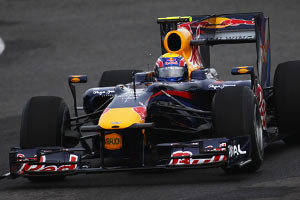Could it be as simple as rising rate springs? And also bear in mind whatever it is will be complimented by an infamously fuel efficient Renault engine in the back of the RB6. The savings per lap are probably quite small but add up over a race distance. By the time you put 50-65 laps worth of fuel into the cars that little difference could be worth as much as half a second quite easily I think.bill shoe wrote:The ghost of ride height control rises again (or is it just the grumblings of a driver in a slower car?)
Lewis Hamilton on Red Bull:
“It’s a difficult to explain. I don’t think there’s anything wrong with [us in] Q3. They are obviously doing something that enables them to do that time, because in Q1 and Q2 we’re a lot closer than in Q3. Clearly there’s some kind of trick or something going on. I think bit by bit we’ll figure it out.
http://adamcooperf1.com/2010/05/12/lewi ... out-of-it/
I guess this theory is supported by the fact Q1 & Q2 are not the only low-fuel situations that the Mclarens are closer in terms of pace to the red Bulls. They are closer toward the end of a race as well.




